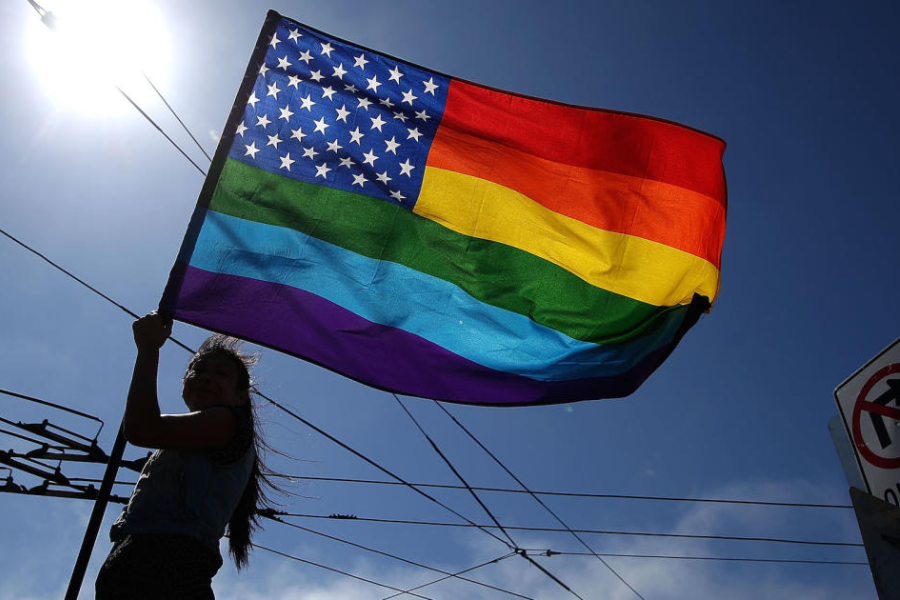Understanding the Vergogna Flag: A Controversial Emblem of Cultural Resistance
Introduction
The “vergogna flag” has stirred significant controversy recently, especially with the rise of discussions on cultural symbols, freedom of expression, and LGBTQ+ rights. The term “vergogna,” an Italian word for “shame,” has become associated with a proposed flag that challenges the meaning and symbolism of more widely accepted emblems, particularly the Pride flag. Understanding this flag requires diving into the political, social, and cultural contexts that have fueled its creation and its implications for broader societal debates.
What is the Vergogna Flag?
The concept of the vergogna flag has come to the forefront of discussions about free speech and the symbolic power of flags in modern society. “Vergogna,” meaning “shame” in Italian, was suggested as a counter-symbol to the Pride flag, which has become an iconic emblem of LGBTQ+ rights, pride, and inclusion worldwide. The proposal for the vergogna flag emerged from more conservative political circles, specifically following a controversial statement made by Martha-Ann Alito, wife of U.S. Supreme Court Justice Samuel Alito, who suggested that the “shame” flag could replace the Pride flag. This was seen as an intentional statement of opposition to the LGBTQ+ rights movement and a call for a return to what she and others see as traditional family values.
The vergogna flag is often described as a symbol of defiance against LGBTQ+ pride and an assertion of values that some argue are under threat due to the growing recognition of LGBTQ+ communities. Unlike the Pride flag, which is a symbol of inclusivity, acceptance, and resistance against discrimination, the vergogna flag represents what its supporters view as a repudiation of that movement.
The Historical Context Behind the Pride Flag
To fully understand the impact of the vergogna flag, it’s important to first explore the origins and cultural significance of the Pride flag. The rainbow flag was created in 1978 by artist Gilbert Baker in San Francisco as a symbol of the LGBTQ+ community. The flag consists of six colors: red, orange, yellow, green, blue, and violet, each representing a different value: life, healing, sunlight, nature, harmony, and spirit.
The rainbow flag has since become synonymous with LGBTQ+ pride and is flown during Pride Month every June, among other events celebrating LGBTQ+ rights worldwide. It is a symbol of unity, inclusivity, and visibility, standing in stark contrast to previous societal norms that marginalized or oppressed LGBTQ+ individuals. It is commonly seen as a call for equality, social justice, and the acceptance of sexual and gender diversity.
You Might Also Like: Maryland City Grey Skys: An Exploration of Weather, Landscape, and the Beauty of Overcast Days
The Political Divide and Symbolism
The controversy surrounding the vergogna flag is rooted in a broader political and cultural divide, particularly in the United States. The nation has been sharply divided on LGBTQ+ issues, with significant pushback from conservative groups who view the LGBTQ+ movement as an infringement on traditional family structures and values. This ideological divide is often expressed through symbols, including flags.
The vergogna flag, as proposed, is meant to be a symbol of opposition to the values represented by the Pride flag. For some, it reflects a form of “conservative” pride, asserting a stance against what they perceive as the overreach of LGBTQ+ activists into public spaces, media, and politics. It symbolizes a rejection of the acceptance of LGBTQ+ identities, emphasizing a return to “traditional” values.
This idea is not just about symbolism but about a deeper cultural conflict. While the Pride flag represents a hard-won victory for LGBTQ+ rights and social recognition, the vergogna flag embodies the resistance to these changes. In this context, the vergogna flag becomes a political tool, a means of rallying those who feel that LGBTQ+ acceptance goes against their beliefs, particularly in religious or conservative circles.
Cultural and Social Implications of the Vergogna Flag
The creation and suggestion of the vergogna flag also raise significant questions about the role of symbols in shaping cultural and social discourse. Flags, as powerful emblems of identity, often serve as rallying points for movements. In the case of the Pride flag, it has become an essential symbol of visibility, belonging, and resilience for the LGBTQ+ community. The flag’s colors and history convey a message of empowerment, social justice, and human rights.
In contrast, the vergogna flag, by its very nature, seeks to reverse these associations. It challenges the notion of LGBTQ+ pride by labeling it as “shameful” and positioning itself as a rejection of progress made in terms of LGBTQ+ rights. This highlights the ongoing culture wars in many parts of the world, particularly in the West, where symbols of equality are increasingly being met with symbols of resistance.
This dynamic is particularly relevant in countries like the U.S., where LGBTQ+ rights have become a central point of contention in political debates. With the advent of legal victories, such as the Supreme Court’s decision to legalize same-sex marriage in 2015, many LGBTQ+ advocates have seen these victories as affirmations of their rights and identities. However, opponents of LGBTQ+ rights continue to resist these advancements, often expressing their opposition through symbols, such as the vergogna flag.
You Might Also Like: Best Parks for Picnics Near Me: A Comprehensive Guide
Symbolic and Political Resistance
The vergogna flag also serves as a form of symbolic resistance. As political and social movements gain momentum, opposition groups often react by creating their own symbols to counteract the movement’s messages. In this case, the vergogna flag can be seen as a reaction to the LGBTQ+ community’s visibility and influence in society. It is an attempt to reclaim certain spaces and cultural symbols that some feel are being “taken over” by LGBTQ+ activism.
For many conservative commentators and groups, the flag represents not just a disagreement with specific policies or laws related to LGBTQ+ rights but a deeper rejection of what they perceive to be a cultural shift that threatens their vision of societal norms. The vergogna flag, then, becomes a symbol of political opposition to these changes, representing a broader desire to maintain the status quo.
The Power of Flags in Modern Discourse
The role of flags as symbols in modern political discourse cannot be overstated. Flags are not just pieces of fabric; they are powerful symbols that represent collective identities, struggles, and beliefs. The Pride flag, for instance, is not merely a representation of LGBTQ+ identity; it embodies the community’s fight for recognition, equality, and acceptance in the face of historical marginalization and discrimination.
Similarly, the vergogna flag, while still in the realm of conceptual proposals, represents a broader ideological battle over identity, cultural values, and political power. It taps into the symbolic power of flags to rally supporters and signal a collective stance on a divisive issue. In this sense, the vergogna flag is more than just an emblem of resistance—it is a statement about the ongoing cultural struggle between competing visions of society and what it means to be “included” or “excluded” in the public sphere.
Public Reactions to the Vergogna Flag
The reactions to the vergogna flag have been polarized, as expected in such a politically and culturally charged environment. Supporters of LGBTQ+ rights have condemned the flag as an offensive and regressive symbol, arguing that it perpetuates stigma and exclusion. For them, the Pride flag represents a hard-won victory for human dignity and equality, and any attempt to diminish its significance is seen as a direct attack on the LGBTQ+ community and its allies.
On the other hand, those who support the vergogna flag see it as an important form of free expression, a way to voice disagreement with what they perceive as the overreach of LGBTQ+ activists in public life. They argue that the flag is not about promoting hate but about expressing a legitimate opposition to the increasing visibility and influence of LGBTQ+ issues in society. For them, the vergogna flag is a way to reclaim symbols that they feel are being used to advance a political agenda they do not support.
This divide in public opinion underscores the broader ideological rift that exists on LGBTQ+ rights and other related social issues. As debates over free speech, inclusivity, and cultural identity continue to evolve, it is likely that symbols like the vergogna flag will remain focal points in these contentious discussions.
You Might Also Like: State Center Maryland Settlement: The Road to Redevelopment
Conclusion
The “vergogna flag” has emerged as a highly controversial symbol, representing the intense cultural and political divide surrounding LGBTQ+ rights. Positioned as a counterpoint to the widely recognized Pride flag, the vergogna flag has sparked passionate debates about freedom of expression, societal values, and the evolving landscape of cultural identity. Supporters of the flag see it as an expression of opposition to what they perceive as the overreach of LGBTQ+ activism, while detractors argue that it undermines the hard-won progress of LGBTQ+ rights. As these cultural and political battles unfold, the vergogna flag remains a potent symbol of resistance, highlighting the broader ideological rifts that shape discussions around inclusion, equality, and societal norms. The debate over this flag underscores the importance of understanding symbols and their role in shaping public discourse, particularly as the battle for recognition, rights, and values continues to intensify.
FAQs
What is the vergogna flag?
The vergogna flag is a proposed symbol, introduced by conservative groups, that opposes the values represented by the Pride flag. “Vergogna,” which means “shame” in Italian, is intended to challenge the LGBTQ+ movement and its ideals of inclusion and acceptance.
Why is the vergogna flag controversial?
The vergogna flag has sparked controversy because it is seen as a direct repudiation of the Pride flag, which is a symbol of LGBTQ+ rights and acceptance. Its creation is part of a broader cultural and political resistance to LGBTQ+ visibility and inclusion in society.
Who proposed the vergogna flag?
The concept of the vergogna flag gained attention following a statement made by Martha-Ann Alito, wife of U.S. Supreme Court Justice Samuel Alito, who suggested it as an alternative to the Pride flag, reflecting opposition to LGBTQ+ rights and values.
What does the vergogna flag represent?
The vergogna flag represents opposition to the LGBTQ+ rights movement and advocates for what its supporters consider to be traditional family values. It symbolizes resistance to the increasing visibility and influence of LGBTQ+ issues in society.
How does the vergogna flag differ from the Pride flag?
The Pride flag is a symbol of unity, inclusion, and acceptance for the LGBTQ+ community, while the vergogna flag is seen as a symbol of resistance against these values, challenging the societal shifts towards LGBTQ+ acceptance and rights.
What are the public reactions to the vergogna flag?
Reactions to the vergogna flag are highly polarized. Supporters view it as a form of free expression and opposition to the LGBTQ+ movement, while critics argue that it perpetuates stigma and exclusion, undermining the progress of LGBTQ+ rights.
Why are flags so powerful in political discourse?
Flags serve as powerful symbols that represent collective identities and values. In the case of the vergogna and Pride flags, they embody competing cultural and political visions, making them central to the debates surrounding identity, inclusion, and societal values.
Explore the latest news and updates on Horizan THANK YOU!






